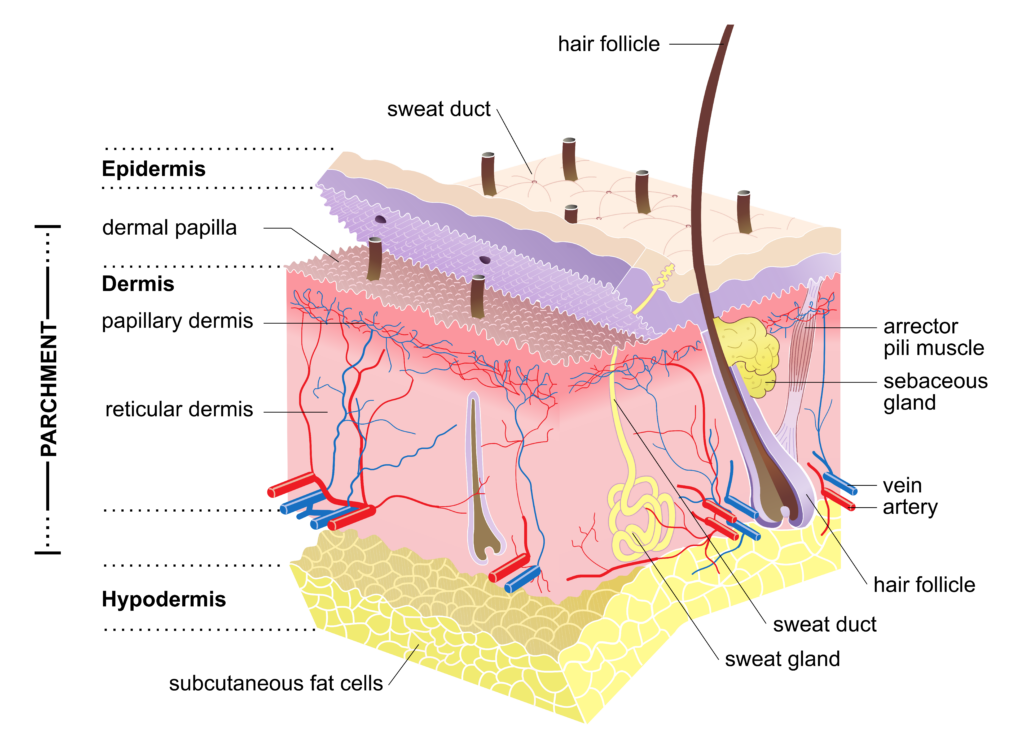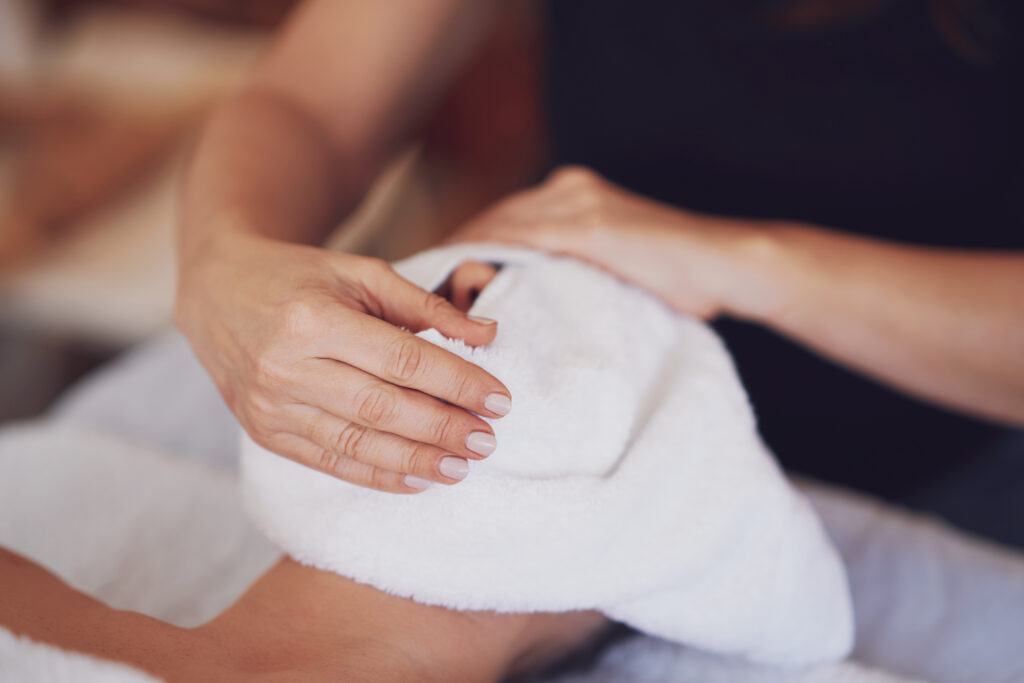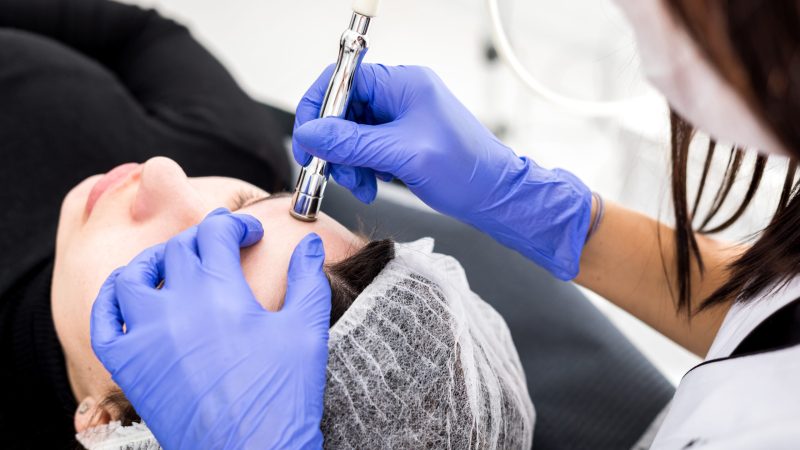Welcome to the ultimate guide on facial skin extractions, where we delve into the who, what, and why of this popular skincare technique. Whether you’re battling pesky blackheads or overly clogged pores, this article has got you covered. With expert advice and step-by-step instructions, you’ll understand the intricacies of facial extractions and be armed with the knowledge to achieve a smoother, brighter complexion.
In this comprehensive guide, we will explore the various methods of extractions, from manual to chemical, and provide insights into which option may be most suitable for your skin type. Additionally, we’ll address common misconceptions and myths surrounding extractions, ensuring you have accurate information at your fingertips.
Our goal is to empower you with the tools and understanding necessary to perform facial extractions safely and effectively. So, grab your skincare arsenal, and let’s dive into the world of facial skin extractions together.
Remember, healthy skin is just a few extractions away!
Understanding the Skin

Before we dive into the world of facial skin extractions, it’s crucial to understand the anatomy of our skin. The skin is the largest organ in our body, serving as a protective barrier against external elements. It is comprised of three layers: the epidermis, dermis, and subcutaneous tissue.
The epidermis is the outermost layer of the skin and acts as a shield against environmental factors. It is responsible for the production of new skin cells, which migrate to the surface and gradually shed off. The dermis, located beneath the epidermis, contains collagen and elastin fibers, providing strength and elasticity. Finally, the subcutaneous tissue is the deepest layer, comprised of fat cells that help regulate body temperature.
Understanding the structure and function of the skin is essential when it comes to facial extractions. It allows us to identify the specific issues we’re targeting and implement the most appropriate techniques for optimal results. Now that we have a basic understanding of the skin, let’s explore why facial skin extractions are important.
Understanding the importance of facial skin extractions
Facial skin extractions play a crucial role in maintaining healthy, clear skin. Our skin is constantly exposed to various pollutants, bacteria, and dead skin cells. Over time, these impurities can accumulate and clog our pores, leading to the formation of blackheads, whiteheads, and other blemishes.
Extractions help to remove these blockages, allowing the skin to breathe and preventing further breakouts. By clearing out the pores, extractions promote a smoother complexion and improve the effectiveness of other skincare products.
However, it’s important to note that extractions should be performed with caution. Improper techniques or excessive force can result in skin damage, inflammation, and even scarring. That’s why it’s crucial to understand how to prepare for a facial skin extraction procedure.
Preparing for a facial skin extraction procedure

Before performing facial extractions, it’s essential to prepare both your skin and the tools you’ll be using. Here are some steps to follow for a successful extraction procedure:
- Cleanse Your Skin: Start by washing your face with a gentle cleanser to remove any dirt, oil, or makeup. This step ensures that the extraction process is performed on clean skin, reducing the risk of infection.
- Steam Your Face: Steaming your face helps to open up the pores, making extractions easier and less painful. You can steam your face by placing a towel over your head and leaning over a bowl of hot water for about 10 minutes. Alternatively, you can use a facial steamer for convenience.
- Gather Your Tools: It’s important to have the right tools for extractions. This includes clean cotton pads, tissues, a magnifying mirror, and extraction tools such as comedone extractors or sterile needles. Ensure that all tools are sanitized and ready to use.
Once you’ve prepared your skin and tools, you’re ready to proceed with the extraction process. Let’s explore how facial extractions work and the different methods available.
How Facial Extractions Work
Facial extractions involve the manual removal of impurities from the skin, such as blackheads, whiteheads, and pimples. There are several methods of extractions, each with its own benefits and considerations. Let’s take a closer look at the most common techniques:
- Manual Extractions: This method involves using specialized tools, such as comedone extractors, to gently press and release the contents of clogged pores. It requires precision and a delicate touch to avoid damaging the skin.
- Chemical Extractions: Chemical peels or exfoliants can be used to dissolve the debris and dead skin cells that clog the pores. These products contain ingredients such as alpha-hydroxy acids (AHAs) or beta-hydroxy acids (BHAs) that promote exfoliation and skin renewal.
- Vacuum Extractions: This technique utilizes a suction device to remove impurities from the skin. The vacuum creates a gentle pressure that dislodges the debris, leaving the pores clear.
Each method has its pros and cons, and the choice depends on factors such as skin type, severity of the blemishes, and personal preference. It’s essential to consult with a skincare professional or dermatologist to determine the most suitable extraction method for your skin.
Aftercare tips for facial skin extractions
After undergoing facial extractions, it’s crucial to provide proper care to your skin to minimize any potential side effects and promote healing. Here are some aftercare tips to follow:
- Avoid Touching Your Face: Resist the temptation to touch or pick at the extracted areas. This can introduce bacteria and increase the risk of infection or scarring.
- Cleanse and Moisturize: Use a gentle cleanser to cleanse your skin and remove any residual debris. Follow up with a lightweight moisturizer to hydrate and nourish the skin.
- Protect Your Skin: Apply a broad-spectrum sunscreen with at least SPF 30 to protect your skin from harmful UV rays. This step is crucial as your skin may be more sensitive after extractions.
By following these aftercare tips, you can help your skin recover and maintain the benefits of the extraction procedure. Now, let’s explore the common types of skin blemishes that can be treated with extractions.
Common types of skin blemishes that can be treated with extractions
Facial extractions are particularly effective in treating various types of skin blemishes. Here are some common issues that can be addressed through extractions:
- Blackheads: These small, dark spots occur when oil and dead skin cells clog the pores and oxidize. Manual extractions or chemical exfoliants can effectively remove blackheads and prevent their recurrence.
- Whiteheads: Whiteheads, also known as closed comedones, are small, flesh-colored bumps that occur when a pore is clogged with oil and dead skin cells. Manual extractions can gently remove whiteheads without causing damage to the surrounding skin.
- Pimples: Pimples, or acne lesions, are inflamed and infected pores. While extractions can help remove the contents of a pimple, it’s important to exercise caution to prevent further inflammation or scarring.
- Milia: Milia are small, white, hard bumps that often occur around the eyes or on the cheeks. These are caused by trapped keratin under the skin’s surface. Manual extractions can effectively remove milia, but it’s important to have a professional perform this procedure to avoid injury to the delicate eye area.
By understanding the specific types of blemishes that can be treated with extractions, you can target your skincare routine more effectively and achieve clearer, healthier skin.
Potential risks and precautions of facial skin extractions
While facial extractions can be highly effective in treating skin blemishes, it’s important to be aware of the potential risks and take necessary precautions. Here are some considerations to keep in mind:
- Skin Sensitivity: Individuals with sensitive skin may be more prone to irritation and redness after extractions. It’s important to communicate any concerns or sensitivities to your skincare professional.
- Infection: If the extraction tools or the skin are not properly sanitized, there is a risk of introducing bacteria and causing infection. Ensure that all tools are clean and sterile before performing extractions.
- Scarring: Excessive force or improper technique during extractions can lead to scarring or post-inflammatory hyperpigmentation. It’s crucial to exercise caution and seek professional help if you’re unsure of the proper technique.
- Post-Extraction Breakouts: In some cases, extractions can cause a temporary increase in breakouts as the skin adjusts. This is known as purging and usually subsides within a few days. However, if the breakouts persist or worsen, it’s advisable to consult with a skincare professional.
By understanding and mitigating these potential risks, you can ensure a safe and effective extraction procedure. Now, let’s address some frequently asked questions about facial skin extractions.
Frequently asked questions about facial skin extractions
- Are facial extractions painful?
Facial extractions can cause mild discomfort, especially in sensitive areas. However, a skilled professional will minimize any pain or discomfort during the procedure. - How often should I get facial extractions?
The frequency of facial extractions depends on your skin type and specific concerns. Generally, it’s recommended to have extractions performed by a professional every 4-6 weeks. - Can I perform extractions at home?
While it’s possible to perform extractions at home, it’s advisable to seek professional help, especially if you’re unsure of the proper technique or have sensitive skin. - Can extractions help with acne scars?
Facial extractions primarily target active blemishes and do not directly treat acne scars. However, by minimizing breakouts and promoting skin renewal, extractions can indirectly improve the appearance of acne scars over time. - Can extractions be done on all skin types?
Extractions can be performed on most skin types, but it’s important to consider individual factors such as skin sensitivity and any underlying skin conditions. Consulting with a skincare professional is crucial to determine the suitability of extractions for your skin.
Facial skin extractions are a valuable tool in maintaining clear, healthy skin. By understanding the anatomy of our skin, the importance of extractions, and the proper techniques, you can achieve a smoother, brighter complexion. Remember to follow proper aftercare and consult with a skincare professional for personalized advice. With the knowledge gained from this ultimate guide, you’re well-equipped to embark on your journey towards radiant skin
Remember, healthy skin is just a few extractions away!

